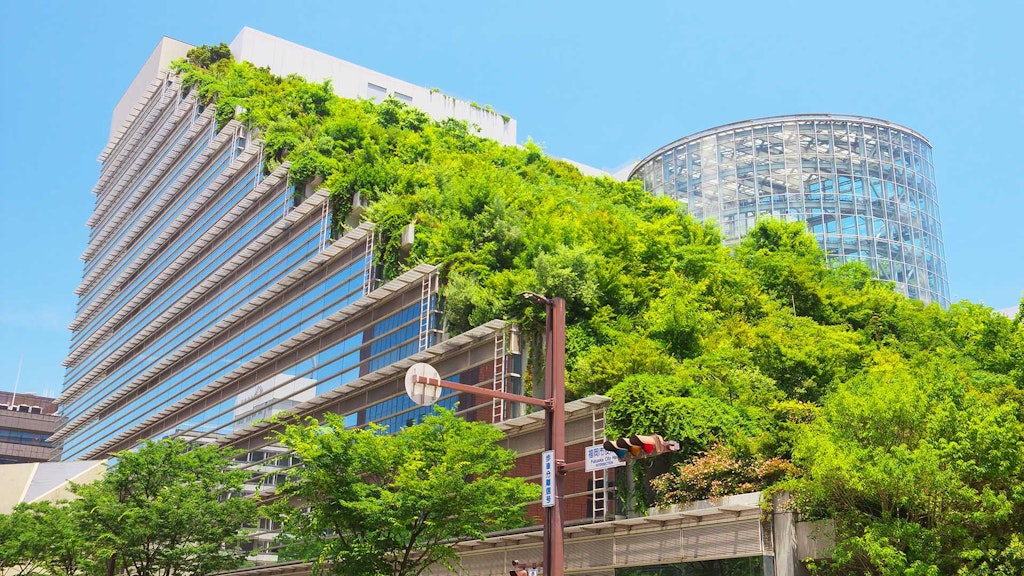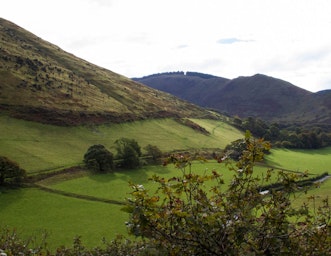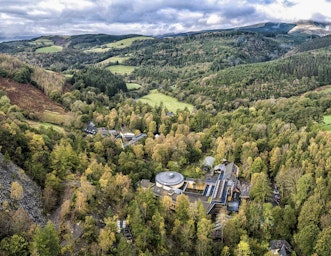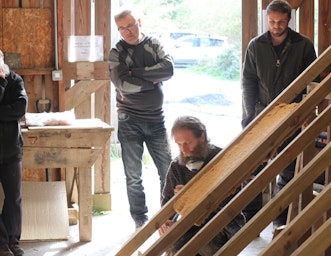
Adaptation: from coping to transformation
March 12, 2020Home » Adaptation: from coping to transformation
Wildfires, drought, hurricanes, flooding – the impacts of our emissions are impossible to ignore. Tanya Hawkes looks at how plans can be made for an uncertain future.
The climate is changing. The 2018 ‘Special Report on 1.5°C’ from the Intergovernmental Panel on Climate Change (IPCC) shows that we are being forced to adapt to a certain level of climate breakdown. We can limit greenhouse gas emissions but we cannot mitigate their effects entirely.
Over the coming decades, we will increasingly be forced to adapt to levels of climate change which will be uneven, regionally unique and non-linear. National and regional adaptation plans will need to deal with a high degree of uncertainty and strengthen long-term scenario planning skills and international cooperation.
What is adaptation?
Whilst climate change mitigation aims to reduce CO2 emissions, adaptation is how we cope with and adapt to climate impacts. Different types of adaptation can be categorised as: coping (responding to events as they happen); incremental (responding to events, but also learning from them and changing approach); or transformational (making long-term changes in advance of events). For example, have you bought a fan in the last three years because of increasingly hot summers? That’s coping. Installing an air conditioning system to keep cool, would be more incremental, as a learned response to change, but might also contribute to greater emissions.
Transformation is when we create a new pathway to change. For example, when we see that business as usual methods are not working (e.g. installing a cooling system that actually adds to climate change), so long term solutions, like retrofitting homes with better insulation and passive cooling and heating systems, transforms and helps us adapt.
Towards net zero
Adaptation planning can help create a net zero carbon future with climate resilient systems. It is a way of planning for the likelihood and severity of disasters, such as flooding, heatwaves, storm surges, and identifying what and who are most vulnerable, then putting in place response measures to help recover from the impacts of climatic events.
We can build adaptive capacity into some of our methods of cutting greenhouse gas emissions, so that some adaptation measures can have the co-benefit of helping us reach net zero. For instance, reforestation in rural areas and tree planting in urban areas can help to mitigate flooding from rivers or control higher temperatures in urban areas. At the same time, it acts as carbon sequestration, contributing to getting to net zero. More localised food production results in shorter supply chains, which are more resilient to climate change impacts, whilst clocking up fewer food miles and thereby contributing towards our carbon reduction target.
A just transition
Climate justice requires a multi-level approach to adaptation.
The expectation from the United Nations Framework Convention on Climate Change is that states will develop their own adaptation plans based around their unique vulnerabilities to climate change.
The Flexible Workplan of the Adaptation Committee 2019-2021 is the framework for helping countries to develop their own solutions, using data systems for planning and implementing action. Adaptation research often discusses the importance of ‘regional determinants’ and gathering the unique knowledge of a certain area to create appropriate plans. For example, an area prone to flash floods might focus on green infrastructure (see below), or an area prone to drought might invest time in transboundary treaties with neighbouring states to share resources. Many areas will need a mixture of such strategies.
Whilst it makes sense that there is an emphasis on regions to develop adaptation plans at community and municipal levels in response to their own unique circumstances, regulatory and financial frameworks from higher levels of government are essential to reduce the risk to vulnerable areas and people. Shared support from national and international communities will be essential so poorer areas don’t shoulder the burden of climate breakdown effects that they aren’t responsible for.

Citizen participation
Until recently much climate change adaptation research was top-down. Now many areas are developing participatory methods alongside centralised planning to incorporate the knowledge and experience of local citizens and stakeholders. Inclusive governance structures and the strengthened role of civil society are helping to produce effective adaptation plans based on local knowledge, with NGOs in the global south providing and developing expertise that could be applicable elsewhere.
Sharing knowledge may be key to resilience. Communities already vulnerable to the effects of climate change, such as the Caribbean Small Island States, the megacity of Dhaka and other places that are already predisposed to periodic drought, flooding and crop failure, are finding ways to gather data and plan adaptation to extreme weather events that suit their local areas and maximise democracy.
This democratic, participative and inclusive approach could be part of the solution to addressing some of the inequalities created or exacerbated by the impacts of climate change.
Risks, opportunities, and management: adaptation in the UK
The UK’s Department of Environment, Food and Rural Affairs (DEFRA), under the overall framework of the Climate Change Act 2007 and their National Adaptation Programme, produces the current guide to ‘making the country resilient to a changing climate’.
Some of the particular vulnerabilities and risks facing the UK include: a long coastline, some of which is at risk, even now, to rising sea levels; an agricultural industry that will require significant changes in terms of its land use; and a historical reliance on high emissions for our economic growth, including large amounts of investment in fossil fuels from the City of London. We can expect greater coastal erosion, warmer winters, more frequent and severe summer heatwaves, and more severe and unexpected flooding.
The significant challenges that climate change represents to our future economy arguably receive too little attention from the UK government.
Click here to read more about examples of Global perspectives: who is already adapting?
About the author
Tanya researches climate adaptation solutions within a social justice framework. She has a postgraduate diploma in Environmental Policy and studies MSc Sustainability and Adaptation at CAT. She is a contributor to ‘Low Carbon Living 2050’, Palgrave Macmillan, and ‘Zero Carbon Britain: Rising to the Climate Emergency‘.
- Graduate School
- Zero Carbon Britain
- Climate Change
- Policy
Related Topics
Related news


CAT Conversations: Sandy Stevens, CAT graduate
17th April 2025
CAT Student Bursaries Announced for 2025
30th January 2025
CAT stories – Nick Parsons and Mike Russell
29th January 2025Green and blue infrastructure vs grey – an example of a multi-solving adaptation tool
‘Green’ infrastructure is plant-based, like trees and grass roofs. ‘Blue’ infrastructure is water-based, like ponds and swathes. Some might be both, like reed beds.
Traditional ‘grey’ infrastructure, such as the drains and pipes that we are used to in urban areas, tend to draw water (such as rainfall) to rivers as quickly as possible. This has two effects: sudden rainfall overwhelms sewers (and sometimes streets) creating either flash floods or overspill from rivers and sewers, which kills fish and wildlife. Also, paving and tarmac are reducing our porous surfaces and reducing plant growth, both of which contribute to heating, even in rural areas.
Green and blue infrastructure is a multi-solving tool with co-benefits. It is a key adaptation tool, to address flooding and heatwaves. It helps preserve and create new biodiversity, promotes nature connection for people, acts as carbon sequestration, muffles noise and reduces localised air pollution. Some of the key benefits are outlined below.
Email sign up
Keep up to date with all the latest CAT articles and blogs by signing up to our monthly newsletter and following us on Facebook and Twitter.
